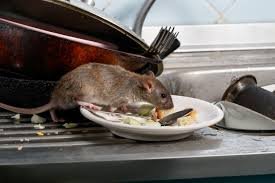
Rodents like mice and rats are not just annoying; they can also cause significant damage to your home and pose health risks by spreading diseases. Once inside, rodents can chew through wires, insulation, and wood, making their presence more than just a nuisance. The key to keeping these pests out is prevention. In this guide, we’ll discuss practical strategies to rodent-proof your home and ensure your living space remains rodent-free.
Why Rodent Prevention Matters
“importance of rodent prevention”
Rodents are experts at squeezing through small cracks and gaps, making them difficult to keep out. Once inside, they can quickly reproduce, turning a minor issue into a full-blown infestation. In addition to the physical damage they cause, rodents can carry harmful diseases such as hantavirus, leptospirosis, and salmonella, which can spread through their droppings and urine.
Common Entry Points for Rodents
“common rodent entry points”
Rodents are resourceful creatures that can enter your home through small openings. Here are some of the most common entry points:
- Gaps and Cracks in Walls and Foundations
Mice can squeeze through openings as small as a quarter of an inch, while rats can enter through holes the size of a half-dollar. Cracks in the foundation, gaps around windows and doors, and holes in walls are all potential entry points. - Vents and Chimneys
“rodent prevention for vents and chimneys”
Rodents can climb up walls and trees to access roof vents and chimneys. Without proper screens or covers, these openings provide easy access for rodents to get into your attic or crawl spaces. - Openings Around Pipes and Utility Lines
“seal gaps around pipes to prevent rodents”
Rodents often enter homes through gaps around pipes, utility lines, and HVAC systems. These openings are often overlooked, making them ideal entry points for small rodents. - Doors and Windows
“rodent-proofing doors and windows”
Gaps under doors, especially garage doors, and poorly sealed windows can serve as easy access points for rodents. If your weather stripping is worn out or damaged, it’s time to replace it to keep pests out.
Top Strategies for Rodent-Proofing Your Home
“rodent-proofing tips”
Preventing rodents from entering your home requires a proactive approach. By following these rodent-proofing strategies, you can effectively safeguard your home.
1. Seal Cracks and Gaps
“sealing cracks to prevent rodents”
The first step in rodent-proofing your home is to inspect the exterior for any gaps, cracks, or holes. Use caulk or expanding foam to seal small cracks and gaps. For larger holes, steel wool or hardware cloth can be used before applying sealant. Be thorough when inspecting areas around windows, doors, foundations, and roofing.
2. Install Door Sweeps and Weather Stripping
“door sweeps for rodent prevention”
Ensure all exterior doors, including your garage door, have proper door sweeps. These barriers prevent rodents from slipping underneath. Additionally, check the weather stripping around windows and doors and replace any damaged sections to block rodent entry.
3. Secure Vents and Chimneys
“installing vent covers for rodent control”
Install metal mesh screens or vent covers on any roof vents, chimney openings, and exhaust fans. These screens will prevent rodents from climbing in, while still allowing for proper airflow.
4. Store Food in Airtight Containers
“storing food properly to prevent rodents”
Rodents are always searching for food, so it’s essential to eliminate food sources in your home. Store pantry items, pet food, and birdseed in airtight containers made of glass or metal. Avoid leaving food out on counters, and regularly clean up crumbs and spills.
5. Keep Trash Secure
“secure trash cans to prevent rodents”
Outdoor garbage bins should be rodent-proof. Use trash cans with tight-fitting lids, and keep them clean to prevent odors that attract rodents. If possible, store trash bins away from your home’s exterior walls.
6. Remove Clutter
“removing clutter for rodent prevention”
Rodents love cluttered areas where they can hide and nest. Remove any unnecessary clutter from your home, especially in attics, basements, and garages. Store items off the floor in sealed containers, and keep storage areas organized.
7. Trim Vegetation Around Your Home
“trimming vegetation to prevent rodents”
Rodents often use trees, bushes, and other vegetation as pathways to access your home. Trim branches that overhang your roof and keep shrubs at least a few feet away from your home’s foundation. Additionally, remove any piles of wood, leaves, or debris near your home, as these can serve as rodent shelters.
8. Fix Leaks and Eliminate Moisture
“moisture control for rodent prevention”
Rodents are drawn to moisture, so fixing leaks is essential. Repair any leaky faucets, pipes, or roof leaks promptly. Use dehumidifiers in damp areas like basements to make your home less attractive to rodents.
9. Use Rodent Deterrents
“rodent deterrents”
Natural rodent repellents, such as peppermint oil, ammonia, and cayenne pepper, can help keep rodents at bay. Spray these substances near potential entry points or in areas where rodent activity has been noticed. Additionally, ultrasonic rodent repellent devices can be placed in attics, basements, and garages to deter rodents with high-frequency sound waves.
10. Regularly Inspect Your Home
“home inspection for rodent control”
Perform regular inspections of your home to identify new gaps, cracks, or signs of rodent activity. Look for droppings, gnawed surfaces, or nests, and take immediate action if you notice any signs of a rodent problem.
When to Call a Professional
“professional rodent control services”
Even with the best prevention strategies, rodents can still find their way into your home. If you notice signs of an infestation, it’s essential to act quickly before the problem worsens. Professional pest control services can provide thorough inspections, identify hidden entry points, and implement effective rodent control solutions.
Conclusion: Keep Rodents Out of Your Home
Preventing rodents from entering your home is all about taking a proactive approach and sealing off potential entry points. By following the tips outlined above, you can significantly reduce the chances of a rodent infestation and keep your home safe and healthy.
At Adibug, we specialize in rodent prevention and control. Our team of experts can help you rodent-proof your home and provide safe, effective solutions to protect your family from these unwanted invaders.
Website: Adibug.com
Phone number: 7578520085








1 comment
JAYDEN
Thanks for sharing these rodent-proofing tips! I didn’t realize how many small gaps rodents can use to enter the home. The recommendation to seal cracks and use metal mesh for vents is something I’ll be doing right away. It’s reassuring to know there are practical steps we can take to keep our homes rodent-free, especially as the colder months approach. Looking forward to more useful advice like this